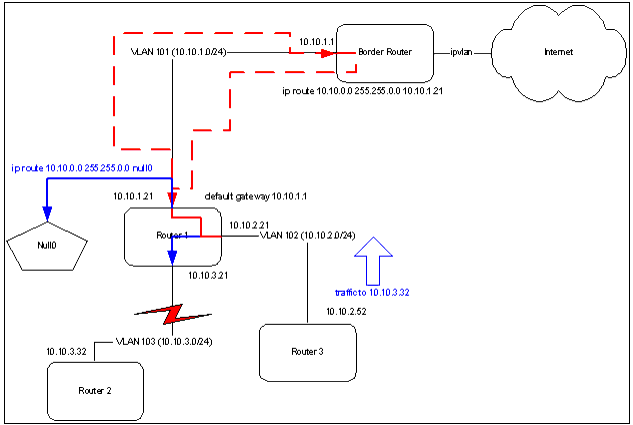|
|
|
A null interface is a virtual interface that discards IP packets and is used to prevent routing loops from occurring in the network.
You do not assign the null interface an IP address. Instead, you create a static route for a network and set the next hop to the null interface (null0).
Figure�98 shows an example of a null interface preventing loops in the network.
Figure�98:�Null Interface Example

In the preceding figure, Router 1 has a default route that points to the Border Router for addresses that are not known within the enterprise.
If a null interface is not configured:
The loop that occurs is shown as a red dotted line in Figure�98.
To prevent such a loop, you can create a static route from 10.10.0.0/16 to the null interface. Once this static route to the null interface is created, Router 1 drops all packets whose destination address is unreachable and within the 10.10.0.0/16 network.
When packets are sent to the null interface, the router sends an Internet Control Message Protocol (ICMP) destination unreachable message to the source of the packet (Router 3 in Figure�98).
|
|
|